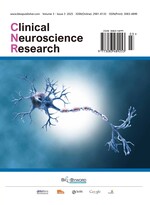The Global Landscape of Sphenopalatine Ganglion Block Research from 1995 to 2025: A Bibliometric and Visualization Analysis
Abstract
Objective: This study aims to systematically review the global evolution trajectory, collaboration networks, and knowledge hotspots of sphenopalatine ganglion block (SPGB) research from 1995 to 2025 using bibliometric and visualization methods, providing evidence-based support for future research and clinical translation in this field. Methods: The study retrieved data from the Web of Science Core Collection, including experimental, clinical, and review articles published from January 1995 to August 2025, excluding non-academic records such as conference abstracts, editorials, and patents. Using VOSviewer 1.6.20 and online platforms, the study conducted bibliometric analyses of annual publication volumes, citation trends, national/institutional/author collaborations, journal distributions, co-citation clustering, and burst terms. The study also verified the maturity of the discipline using Price’s Law, Bradford’s Law, and the small-world characteristics. Results: A total of 917 English-language articles were included, showing an exponential growth pattern with a “flat-then-steep” trend (R2>0.95), reaching a peak of 55 articles in 2023 and an annual citation count exceeding 1,300. The United States, the United Kingdom, Japan, Germany, and Italy formed a high-density collaboration core (Q=0.41), with China-United States and South Korea-Germany being the fastest-growing new edges. At the author level, Nabe T. (24 articles, h-index=11) and Kohno S. (23 articles, cited 87 times as corresponding author) led the first tier, but the global collaboration density was only 0.12. In terms of institutions, Kyoto Pharmaceut Univ. (27 articles, average citations per article 6.81) and Mayo Clin. (average citations per article 9.85) were the leaders, with scarce intercontinental collaborations (density 0.08). Journal distribution showed a significant core area, with the highest impact journals being “Regional Anesthesia and Pain Medicine” (average citations per article 5.31) and “Journal of Allergy and Clinical Immunology” (average citations per article 5.13). The evolution of keywords indicated that from 1995 to 2005, the focus was on mechanism studies of “asthma” and “histamine”; from 2006 to 2015, the focus shifted to clinical indications such as “migraine” and “cluster headache”; and from 2016 to 2025, “double-blind”, “ultrasound-guided”, and “cooled radiofrequency” emerged as hot topics, suggesting technological upgrades and improvements in evidence-based standards. Conclusion: SPGB research has transitioned from a “niche technique” to a “mainstream intervention” and is now entering a stage of multidisciplinary intersection and evidence-based refinement. Future efforts should focus on multicenter randomized controlled trials, standardization of ultrasound guidance, and intercontinental big data collaboration to further enhance the level of evidence and global accessibility.
References
Ho KWD, Przkora R, Kumar S, 2017, Sphenopalatine Ganglion: Block, Radiofrequency Ablation and Neurostimulation — A Systematic Review. Journal of Headache and Pain, 18(1): 118. https://doi.org/10.1186/s10194-017-0826-y
Tolba R, Weiss AL, Denis DJ, 2019, Sphenopalatine Ganglion Block and Radiofrequency Ablation: Technical Notes and Efficacy. Ochsner Journal, 19(1): 32–37. https://doi.org/10.31486/toj.18.0163
Jespersen MS, Jaeger P, Ægidius KL, et al., 2020, Sphenopalatine Ganglion Block for the Treatment of Postdural Puncture Headache: A Randomised, Blinded, Clinical Trial. British Journal of Anaesthesia, 124(6): 739–747. https://doi.org/10.1016/j.bja.2020.02.025
Levin D, Acquadro M, Cerasuolo J, et al., 2022, Sphenopalatine Ganglion Block for Ipsilateral Shoulder Pain Following Open Pancreaticoduodenectomy. BMJ Case Reports, 15(1): e243746. https://doi.org/10.1136/bcr-2021-243746
Gökçek E, Kozan G, 2024, Postoperative Effects of Bilateral Sphenopalatine Ganglion Blockade in Septorhinoplasty Operations; Double-blind Randomized Clinical Trial. Brazilian Journal of Otorhinolaryngology, 90(2): 101373. https://doi.org/10.1016/j.bjorl.2023.101373
Levin D, Cohen S, 2020, Images in Anesthesiology: Three Safe, Simple, and Inexpensive Methods to Administer the Sphenopalatine Ganglion Block. Regional Anesthesia and Pain Medicine, 45(11): 880–882. https://doi.org/10.1136/rapm-2020-101765
Yalamuru B, Weisbein J, Pearson ACS, et al., 2021, Minimally-invasive Pain Management Techniques in Palliative Care. Annals of Palliative Medicine, 11(2), 947–957. https://doi.org/10.21037/apm-20-2386
Schaffer JT, Hunter BR, Ball KM, 2015, Noninvasive Sphenopalatine Ganglion Block for Acute Headache in the Emergency Department: A Randomized Placebo-controlled Trial. Annals of Emergency Medicine, 65(5): 503–510. https://doi.org/10.1016/j.annemergmed.2014.12.012
Orfanou C, Gkaniou A, Rekatsina M, et al., 2025, Sphenopalatine Ganglion Block Using the Tx360 Nasal Applicator for Trigeminal Neuralgia: A Prospective Observational Pilot Study. Cureus, 17(2): e78727. https://doi.org/10.7759/cureus.78727
Gayathri GA, Karthik K, Saravanan R, et al., 2022, A Randomized Control Study to Assess the Efficacy of the Sphenopalatine Ganglion Block in Patients with Post Dural Puncture Headache. Saudi Journal of Anaesthesia, 16(4): 401–405. https://doi.org/10.4103/sja.sja_780_21
Alexander CE, Dua A, 2022, Sphenopalatine Ganglion Block. StatPearls Publishing, Florida.
Marques A, Morais I, Costa V, et al., 2023, Sphenopalatine Ganglion Block for Headache Treatment After an Incidental Durotomy: A Case Report. Turkish Journal of Anaesthesiology and Reanimation, 51(1): 72–74. https://doi.org/10.5152/TJAR.2023.21634

